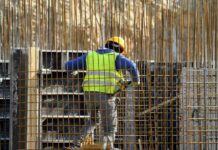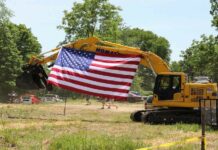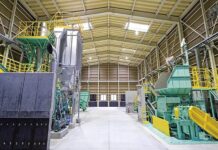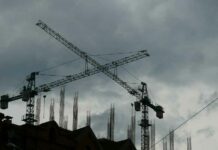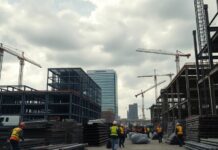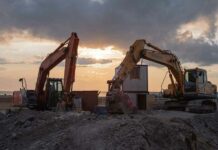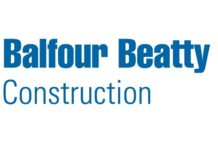Construction work maintains its position as one of America’s most hazardous professions. The complexity of construction sites which involve numerous stakeholders makes liability determination in accident cases very difficult. The guide examines essential legal challenges and considerations involved in construction accident liability cases.
Navigating This Guide:
- Understanding Construction Industry Safety Statistics
- Common Types of Liability Challenges
- Key Factors in Determining Liability
- Insurance and Compensation Issues
- Legal Rights and Representation
- Steps to Take After a Construction Accident
Understanding Construction Industry Safety Statistics
The construction industry still encounters substantial safety difficulties. Recent data shows the industry recorded 1,075 fatal injuries in 2023 which represents the most workplace deaths since 2011. Construction workers encounter a distressing fatal injury rate of 9.6 deaths per 100,000 full-time equivalent workers.
The presented statistics underscore the importance of experienced legal representation. A New York City Construction accident lawyer provides guidance through complex legal situations to secure fair compensation for injured workers.
Construction accidents generate significant financial costs. Construction injuries result in $11.5 billion of annual economic losses to the U.S. economy which includes $4 billion from fatalities and $7 billion from nonfatal injuries. A total of 158,000 construction workers lost workdays in 2023 because of injuries on the job.
Common Types of Liability Challenges
Multiple Liable Parties
Construction accident cases face major difficulties during the process of determining every party who might be legally responsible. A typical construction site involves:
- General contractors
- Subcontractors
- Property owners
- Equipment manufacturers
- Project managers
- Architects and engineers
Multiple parties can hold responsibility for maintaining workplace safety which complicates liability determinations and often leads to disputes.
Workers’ Compensation vs. Third-Party Claims
Recognizing the distinction between workers’ compensation claims and third-party liability claims remains a substantial obstacle. Workers’ compensation delivers benefits without fault considerations but does not provide complete damage coverage. Third-party claims provide the possibility of extra compensation but necessitate demonstrating negligence.
OSHA Compliance Issues
Numerous OSHA regulations apply to construction sites. Safety standard violations affect liability case outcomes. The latest data demonstrates a 2.1% rise in nonfatal workplace injuries and illnesses from 169,600 cases in 2022 to 173,200 cases in 2023.
Key Factors in Determining Liability
Documentation and Evidence
Construction accident claims depend on extensive documentation which includes elements like:
- Accident reports
- Witness statements
- Safety inspection records
- Medical records
- Construction site photographs
- Equipment maintenance logs
Establishing Negligence
To prove liability, it’s necessary to establish:
- Duty of care existed
- Breach of that duty occurred
- The breach caused the injury
- Actual damages resulted
Time Limitations
Filing claims for construction accident cases requires strict adherence to set deadlines. Failing to meet these deadlines results in the loss of compensation rights.
Insurance and Compensation Issues
Insurance Coverage
Construction accident cases can require coordination of several different insurance policies.
- Workers’ compensation insurance
- General liability insurance
- Professional liability insurance
- Builder’s risk insurance
- Umbrella policies
Analyzing which insurance policies apply to specific cases demands substantial legal expertise to understand their interactions.
Types of Compensation Available
Individuals harmed in construction accidents might have claims to multiple compensation options.
Economic Damages
- Medical expenses (current and future)
- Lost wages and income
- Rehabilitation costs
- Property damage
- Vocational retraining if needed
Non-Economic Damages
- Pain and suffering
- Emotional distress
- Loss of quality of life
- Permanent disability or disfigurement
- Loss of consortium
Legal Rights and Representation
Your Rights in Construction Accident Cases
Understanding your rights is essential:
- Right to safe working conditions
- Right to report safety violations
- Right to workers’ compensation benefits
- Right to legal representation
- You have the legal option to pursue extra compensation through third-party claims.
The Importance of Legal Representation
The intricacies of construction accident cases make it vital to hire experienced legal representation. A qualified attorney can:
- Navigate complex liability issues
- Handle insurance negotiations
- Ensure proper documentation
- Meet filing deadlines
- Maximize compensation potential
Steps to Take After a Construction Accident
- Seek immediate medical attention
- Report the accident to supervisors
- Document the accident scene
- Gather witness information
- Contact legal representation
- Maintain detailed records of all related expenses
Building a Strong Legal Foundation
Construction accident liability cases require specialized legal knowledge and experience because they present unique challenges. The construction industry faces high rates of accidents and complicated liability problems that necessitate skilled legal representation to safeguard worker rights and secure proper compensation.
In 2023 the construction industry experienced an increase in its portion of total recordable nonfatal injuries and illnesses reaching 6.7% from 6.0% the previous year. The combination of this trend with the statistic that construction workers represent just 6% of the U.S. labor force yet account for 20% of all work-related fatalities underscores the increasing need for strong legal representation in these cases.
Construction workers, contractors and property owners who understand these legal challenges can more effectively manage construction accident liability cases. Early legal consultation typically produces improved results when dealing with these difficult situations.
Common Types of Construction Accidents
Knowledge of the common construction accidents helps both in creating prevention measures and in establishing liability.
Falls from Heights
Construction fatalities occur most often due to falls on worksites. Common scenarios include:
- Scaffold accidents
- Ladder failures
- Roofing incidents
- Unprotected edges
- Elevator shaft accidents
Struck-by Incidents
These accidents involve workers being hit by:
- Moving vehicles
- Falling objects
- Swinging equipment
- Flying debris
- Construction materials
Equipment-Related Accidents
Construction equipment poses significant risks through:
- Machinery malfunctions
- Operator errors
- Maintenance failures
- Power tool accidents
- Heavy equipment incidents
Prevention Strategies and Best Practices
Preventing construction accidents requires a comprehensive approach:
Safety Training Requirements
- Regular safety meetings
- Equipment operation certification
- Emergency response training
- OSHA compliance workshops
- Site-specific safety protocols
Site Safety Management
- Daily safety inspections
- Clear communication protocols
- Proper equipment maintenance
- Weather condition monitoring
- Regular risk assessments
Future Trends in Construction Safety
New safety innovations drive the evolution of the construction industry.
Technological Advances
- Wearable safety devices
- Real-time monitoring systems
- Digital safety management platforms
- Automated equipment warnings
- Virtual reality training simulations
Regulatory Changes
The construction sector implements new safety standards and requirements to enhance worker protection and reduce accident rates. New safety regulations influence the processes for establishing liability in construction accident situations.
Industry-Specific Challenges
The construction industry encounters distinct obstacles which influence liability claims.
Project Complexity
In modern construction projects numerous contractors and subcontractors as well as specialized teams work together at the same time. This complexity can make it difficult to:
- Establish clear lines of responsibility
- Coordinate safety protocols effectively
- Maintain consistent safety standards
- Track and document incidents properly
- Determine liability when accidents occur
Environmental Factors
Work areas for building projects face multiple environmental difficulties which pose risks to safety.
- Changing weather conditions
- Urban development constraints
- Environmental protection requirements
- Site accessibility issues
- Local regulation compliance
Knowledge of industry-specific challenges helps prevent accidents and manage liability cases efficiently if they occur.
The Path Forward: Taking Action After a Construction Accident
Handling construction accident liability cases demands meticulous examination of intricate legal regulations alongside insurance policies and regulatory guidelines. Construction makes up one-fifth of all work-related deaths yet only represents 6% of the workforce which shows why proper legal representation is essential.
These essential points provide guidance for anyone engaged in a construction accident case.
- Respond to construction accidents with both speed and careful consideration.
- Document everything thoroughly from the start
- Understand the multiple types of compensation available
- Consider all potentially liable parties
- Seek experienced legal representation early
- Stay informed about your rights and responsibilities
The construction sector implements new safety technologies and regulations yet workplace accidents persist. Knowledge of your entitlements along with expert legal help ensures you achieve a fair settlement instead of an insufficient one. To navigate construction accident liability cases successfully you need to act quickly and hire experienced legal representation.



